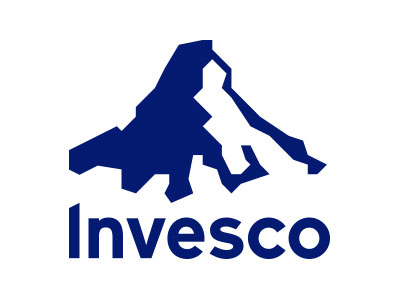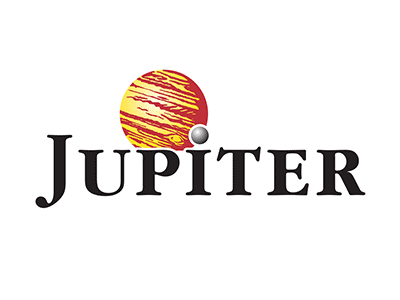

Investors can get exposure to bonds through funds run by a fund manager, but there are several different types of bond funds:
- Corporate bond funds – focus on higher-quality, investment grade bonds issued by companies. Compared to high-yield bonds they have a lower risk of default because they are more likely to be able to repay their debts. They tend to offer lower yields as a result.
- High-yield bond funds – invest in bonds paying higher levels of income. This compensates investors for the extra risk taken, because these bonds are issued by companies that are less likely to be able to pay off their debts.
- Strategic bond funds – have the freedom to invest across the bond markets, including government, corporate and high-yield bonds. They also have some flexibility to invest overseas. Some focus more on paying a high income. Others focus more on growing or sheltering investors' wealth.
- Global bond funds – invest in government and corporate bonds issued globally. They also hold bonds denominated in currencies other than sterling. This means they might have a lot of exposure to foreign currencies. Similar to strategic bond funds, their objectives vary from fund to fund.
- Gilt and index-linked gilt funds – mainly invest in bonds issued by the UK government. They typically have a lower risk of default and lower yields than corporate bonds. Index-linked gilts typically increase any income paid, and the capital repaid at redemption, in line with inflation.
Our view on the Bonds sector
Bonds usually pay a fixed rate of interest. So they can be useful to generate an income. They're often viewed as ‘lower risk’ than investing in a company’s shares. This means they can help limit some of the volatility that normally comes with investing purely in the stock market. We believe bonds can play a part in a diversified portfolio. But there are still risks when investing in bonds.
The main risks to bond investors are a faster-than-expected rise in inflation or interest rates (interest rate risk), a slowdown in economic growth that makes it harder for companies to pay their debts (default risk), or a broad sell-off across the market that makes it difficult to sell bonds at a reasonable price (liquidity risk).
Liquidity risk usually comes following an unexpected event and is therefore difficult to predict, but it can have a significant negative impact on bond prices over the short term.
Default risk is usually more relevant to individual bond issuers such as companies or governments. The company or government doesn’t have to actually default to impact the price of the bond, it only takes investors thinking the chance they might default has increased. This is because if an investor thinks the probability of a default is higher, they will expect a higher level of return to compensate for the perceived higher risk. As the returns on bonds are largely fixed, the price of the bond has to fall to make future returns higher. Of course, if the risk of default reduces, then you can expect the opposite to happen and for the bond to increase in value.
Investing in a bond fund should reduce default risk compared to investing in an individual bond due to diversification across multiple companies or governments. When the economy is in recession though, there is greater potential for multiple companies to have a higher risk of default at the same time, which could be negative for bond markets more widely.
Interest rate risk is a common cause of bonds losing value. When central banks increase interest rates, this makes the yields available on bonds less attractive. In turn, bonds typically fall in value because of reduced demand from investors. Bond yields and values move in opposite directions, so as bonds fall in value, their yield rises. Bond prices usually settle at a level where the yield is attractive compared to interest rates again. If interest rates fall, this should be positive for bond values for the opposite reasons to those noted above.
Within the different types of bonds, developed market government bonds specifically are considered to be ‘safe haven’ assets. This means that they are expected to increase in value when other markets are selling off and potentially vice versa.
The reason for this is that investors feel confident that governments such as the UK or US will not default on their debt, so investors expect to at least get their money back. When stock markets are falling and investors are not sure what will happen with share prices, they typically sell company shares and invest the proceeds into government bonds. Once stock markets have settled and start to rise again, it is common for those same investors to sell their bonds and buy more shares again. This investor behaviour can have a significant impact on the prices of government bonds.
Our Wealth Shortlist features bond funds chosen by our analysts for their long-term performance potential.
Investment notes
Please remember past performance is not a guide to future returns. Where no data is shown, figures are not available. This information is provided to help you choose your own investments, remember they can fall as well as rise in value so you may not get back the original amount invested.
Wealth Shortlist funds in this sector
Funds chosen by our analysts for their long-term performance potential.
See the Wealth shortlistOur Wealth Shortlist features a number of funds from this sector, selected by our analysts for their long-term performance potential. The Shortlist is designed to help investors build and maintain diversified portfolios. To use the Shortlist, you should be comfortable deciding if a fund fits your investment goals and attitude to risk. For investors who don't we offer ready-made solutions, which are aligned to broad investment objectives. For those who want extra help, you can also ask us for financial advice.
The fund ideas below are for some of the bond funds on the Wealth Shortlist but not all. These fund ideas are reviewed and updated periodically to ensure they match our latest views. They are provided for your interest but are not a guide to how you should invest. For more information, please refer to the Key Investor Information for the specific fund. Remember all investments can fall as well as rise in value so you could get back less than you invest. Past performance is not a guide to the future.
There is a tiered charge to hold funds with HL. It’s a maximum of 0.45% a year – view our charges.
Wealth Shortlist fund reviews
The fund aims to generate a combination of income and growth over the long term. Its investment process blends 'top down' macro-economic research with 'bottom up' fundamental analysis of individual companies' bonds. The macro analysis involves building up a picture of where countries are in the economic cycle as well as considering the implications of monetary and fiscal policy for key indicators like inflation and interest rates. This helps Stephen Snowden evaluate which sectors and areas of the economy could benefit from any trends or shifts that might be occurring.
Snowden has delivered strong performance over the long term, outperforming the wider corporate bond peer group average. Although, please remember past performance isn’t a guide to the future. The fund may invest in derivatives and high yield bonds which if used adds risk.
The fund has the freedom to invest across the bond market, allowing Ariel Bezalel to take more risk when the outlook is good, but be more conservative when he’s feeling more cautious. The manager analyses the state of the economy, building up a picture of how he thinks things will develop and then uses this to help him decide where to invest. The fund can invest in emerging market bonds which adds risk.
He’s a talented and experienced manager whose calls on the economic outlook and ability to select successful bonds within certain sectors has added value for investors over the long term. Although, please remember past performance isn’t a guide to the future. At least 70% of the fund will be invested in bonds bought and sold in British pounds or hedged back to Sterling. The fund can invest in high-yield bonds and derivatives, which increase risk.
The fund’s manager Jim Leaviss has the flexibility to invest across global bond markets and currencies and we think he has the experience and resources to do an excellent job for investors. The fund isn’t focused on providing a high income like some other bond funds, but it could offer useful diversification.
Leaviss starts by building his outlook for economic growth, interest rates and inflation across the globe and proactively adjusts the portfolio in response to changing economic conditions. This helps him decide how much to invest in different areas of the bond market. The fund has performed well over the long term and has delivered returns ahead of the broader global bond sector. Past performance isn’t a guide to the future.
The fund can invest in emerging market bonds, high-yield bonds and derivatives, which increase risk. The fund may invest more than 35% in securities issued or guaranteed by a member state of the European Economic Area or other countries listed in the fund’s Prospectus.
There are no recent news updates for this sector
Our expert research team provide regular updates on a wide range of funds.
Please note the research updates are not personal recommendations to trade. If you are unsure of the suitability of an investment for your circumstances please seek advice. Remember all investments can fall as well as rise in value so investors could get back less than they invest.
Latest research updates on funds in this sector
Invesco Tactical Bond: January 2024 fund update
Tue 30 January 2024
Senior Investment Analyst Hal Cook shares our analysis on the manager, process, culture, ESG integration, cost and performance of the Invesco Tactical Bond fund.
Fidelity Sustainable MoneyBuilder Income: January 2024 fund update
Fri 26 January 2024
Senior Investment Analyst Hal Cook shares our analysis on the manager, process, culture, ESG integration, cost and performance of the Fidelity Sustainable MoneyBuilder Income fund.
Morgan Stanley Sterling Corporate Bond: December 2023 fund update
Fri 05 January 2024
Senior Investment Analyst Hal Cook shares our analysis on the manager, process, culture, ESG integration, cost and performance of the Morgan Stanley Sterling Corporate Bond fund.
Jupiter Strategic Bond: September 2023 fund update
Mon 25 September 2023
In this fund update, Senior Investment Analyst Hal Cook shares our analysis on the manager, process, culture, ESG integration, cost and performance of the Jupiter Strategic Bond fund.
iShares Corporate Bond Index: June 2023 fund update
Tue 04 July 2023
In this update, Senior Investment Analyst Hal Cook shares our analysis on the manager, process, culture, ESG Integration, cost and performance of the iShares Corporate Bond Index fund.
Our expert research team provide regular updates on a wide range of funds.




